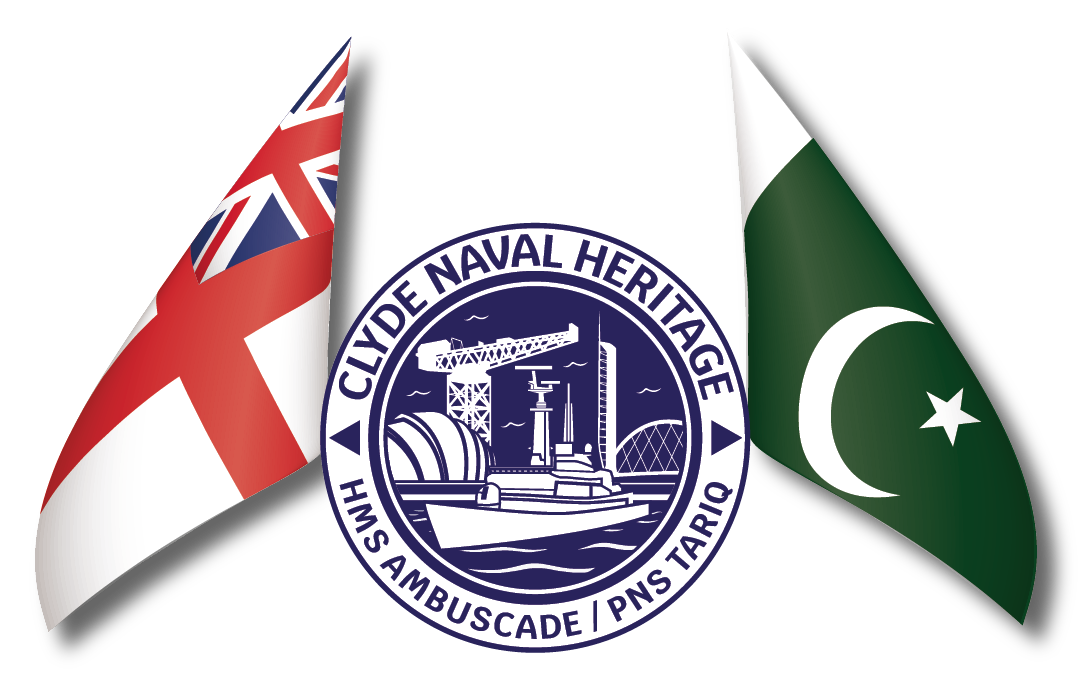HMS Ocean, a prominent aircraft carrier and amphibious assault ship, represents a significant chapter in the maritime history of the UK. Built on the Clyde, one of the most famous shipbuilding regions in the world, HMS Ocean embodied the engineering excellence and naval might of post-war Britain.
The Clyde Shipbuilding Legacy
When HMS Ocean was commissioned, Clyde shipyards were already renowned for producing robust naval ships with cutting-edge technology and strong designs. The shipbuilders’ expertise, honed over decades of experience, played a critical role in HMS Ocean’s success. Known for building vessels that stood the test of both time and warfare, the Clyde’s shipyards were trusted with constructing HMS Ocean in the mid-1990s, when Britain required a powerful and versatile amphibious assault ship for the post-Cold War era.
HMS Ocean’s Design and Construction
HMS Ocean (L12) was the first ship to bear that name since the original HMS Ocean, an aircraft carrier from World War II. The modern version was designed as an amphibious assault ship with the capability to serve as a helicopter carrier. Built by Kværner Govan on the River Clyde, her keel was laid in 1994, and she was launched in 1995.
The ship’s design was based on lessons learned during the Falklands War of 1982, where helicopter support and amphibious landing operations proved essential for military success. HMS Ocean was specifically designed to support amphibious warfare by transporting Royal Marine commandos, deploying helicopters, and operating as a base for military aircraft.
Dimensions and Specifications:
Length: 202 meters
Beam: 35 meters
Displacement: 21,500 tonnes
Speed: 18 knots
Crew: 255 personnel, including aircrew and Royal Marines
Innovations: HMS Ocean was designed with a flight deck that could accommodate helicopters like the Chinook, Merlin, and Apache, giving it unparalleled versatility. The ship could carry up to 18 helicopters and was capable of launching amphibious operations, thanks to its capacity to deploy four LCVP (Landing Craft Vehicle Personnel) Mk5 landing craft.
The construction on the Clyde brought together some of the most advanced shipbuilding techniques of the time. Govan Shipbuilders, a part of the Kværner group at the time, utilized modular construction, a technique where different parts of the ship were built separately and then assembled. This significantly reduced the time needed for completion.
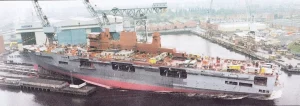
HMS Ocean’s Operational Service
After being commissioned in 1998, HMS Ocean quickly became a pivotal part of the Royal Navy’s amphibious capabilities. Designed to carry 800 Royal Marines and their equipment, it was seen as the flagship of the UK’s amphibious warfare fleet. Throughout its service, the ship participated in multiple high-profile military operations and humanitarian missions.
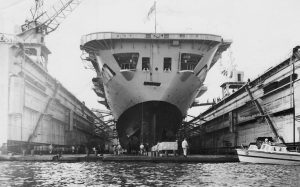
Military Operations:
Iraq War (2003): HMS Ocean played a significant role during the Iraq War. It was used as a helicopter platform and provided air support to the ground forces engaged in Iraq. The ship’s ability to deploy helicopters like the Apache gunship made it a key asset in modern naval warfare.
Libya Conflict (2011): HMS Ocean was also actively involved in NATO operations during the Libyan Civil War. In 2011, it served as the launch platform for Apache helicopters, which provided crucial air support in enforcing the no-fly zone over Libya.
Joint Warrior Exercises: HMS Ocean often participated in the UK’s bi-annual Joint Warrior exercises, the largest military exercise in Europe, helping to train British and allied forces in amphibious warfare, helicopter operations, and combined naval tactics.
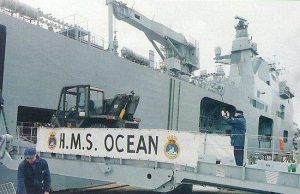
Humanitarian Missions
Hurricane Irma (2017): HMS Ocean also demonstrated its versatility by providing humanitarian assistance. After Hurricane Irma devastated parts of the Caribbean in 2017, the ship was deployed to deliver aid to affected areas, proving its value beyond military operations. It delivered tons of food, water, and medical supplies and served as a floating hospital, a testament to the ship’s adaptability.
Flagship of the Fleet:
In 2015, HMS Ocean was named the Royal Navy’s Fleet Flagship, a title reflecting its central role in modern British naval power. The ship became the command and control centre for naval operations, further cementing its status as a critical asset to British defence.
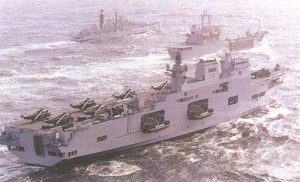
4. Decommissioning and Legacy
In 2018, after 20 years of service, HMS Ocean was decommissioned. The ship had been an essential part of the Royal Navy’s fleet, participating in numerous military operations, NATO exercises, and humanitarian efforts. Despite its successful service, budgetary constraints and the introduction of new ships like the Queen Elizabeth-class aircraft carriers led to the decision to retire HMS Ocean.
The ship was sold to Brazil in 2018 for £84 million, where it was renamed Atlântico and continues to serve in the Brazilian Navy. The sale marked the end of an era for the Royal Navy but extended HMS Ocean’s life in a new role. Her legacy as a Clyde-built ship continues, symbolizing the importance of the River Clyde in producing vessels that stand the test of time.
The Clyde’s Contribution: The fact that HMS Ocean continues to serve another nation is a testament to the quality of work done by Clyde shipbuilders. Even after two decades of hard service, the ship remains a vital asset. HMS Ocean is one of the last major warships to be built on the Clyde, symbolizing the shipyard’s enduring legacy in naval construction.hms ocean
HMS Ocean’s history is deeply intertwined with the Clyde, a river whose shipyards have produced some of the most iconic vessels in British maritime history. From its construction in the 1990s to its decommissioning in 2018, HMS Ocean was a vital part of the Royal Navy’s fleet. Its versatile design allowed it to serve in diverse roles—whether in combat, peacekeeping, or disaster relief.
The ship’s legacy continues today as it sails under the Brazilian flag, a reminder of the strength and endurance of the Clyde-built vessels. Although the Clyde’s shipbuilding industry has seen significant decline in recent decades, HMS Ocean stands as a proud symbol of the region’s maritime heritage and its continued impact on global naval operations.
The story of HMS Ocean is a reminder of how the Clyde’s shipbuilding expertise helped shape the Royal Navy’s modern capabilities, and how ships built in Scotland continue to sail the world’s oceans, defending, aiding, and supporting nations far beyond their original shores.
